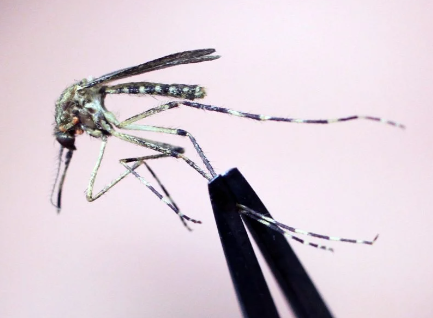Do you know where the deadly mosquito virus in Massachusetts comes from? What’s hidden behind the mosquito virus? Check below to know more.
Introduction: A Growing Concern
In recent weeks, a dangerous mosquito-borne virus has heightened anxiety among residents of Massachusetts. Known as Eastern Equine Encephalitis (EEE), this virus has forced many to alter their routines and take extra precautions. As cases of EEE increase, the impact on local communities becomes more pronounced, raising significant public health concerns.
The Threat of Eastern Equine Encephalitis
Eastern Equine Encephalitis is a rare but severe disease transmitted by mosquitoes. The virus primarily affects horses but can also infect humans, leading to severe neurological complications. EEE is characterized by symptoms such as high fever, headache, and seizures, which can escalate to coma or even death. The virus is particularly concerning because of its high mortality rate and the limited availability of effective treatments or vaccines for humans.
Recent Developments and Impact
Recent developments have exacerbated fears surrounding EEE. Health officials in New Hampshire recently reported a fatal case, bringing the virus into the spotlight across New England. The case has prompted a flurry of public health warnings and increased monitoring in neighboring states, including Massachusetts. Residents are being urged to stay informed about the risks and take preventive measures to reduce exposure to mosquito bites.
Preventive Measures and Recommendations
To mitigate the risk of EEE, public health officials recommend several preventive strategies. Staying indoors during peak mosquito activity times—dawn and dusk—is crucial. When outdoor activities are unavoidable, wearing long sleeves and pants and using insect repellent containing DEET can offer protection. Additionally, eliminating standing water around homes, where mosquitoes breed, is essential for reducing mosquito populations.
Community Response and Adaptation
The community’s response to the threat of EEE has been swift. Local authorities are working to increase public awareness through informational campaigns and community outreach programs. Efforts to control mosquito populations have also been intensified, with spraying and other measures being implemented in affected areas. Residents are adapting to the new reality by altering their outdoor activities and incorporating additional protective measures into their daily lives.
Looking Ahead: Managing the Threat
As the situation evolves, managing the threat of EEE will require ongoing vigilance and collaboration between public health officials and the community. Continued research into effective vaccines and treatments is essential for long-term control of the virus. In the meantime, staying informed, practicing preventive measures, and supporting local public health initiatives will play a crucial role in safeguarding health and well-being.
In conclusion, the emergence of Eastern Equine Encephalitis has created a palpable sense of unease among Massachusetts residents. By understanding the risks, implementing preventive measures, and working together, communities can better navigate the challenges posed by this lethal mosquito virus.




